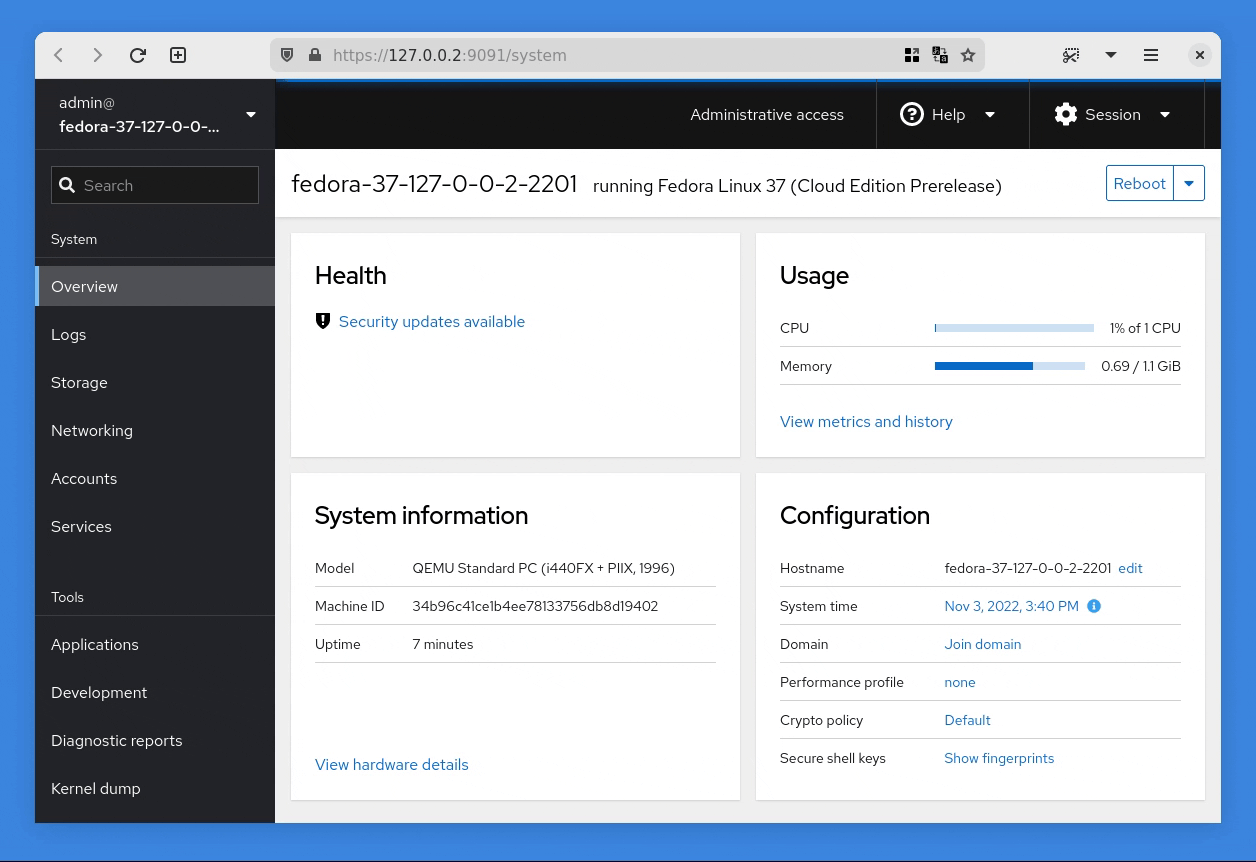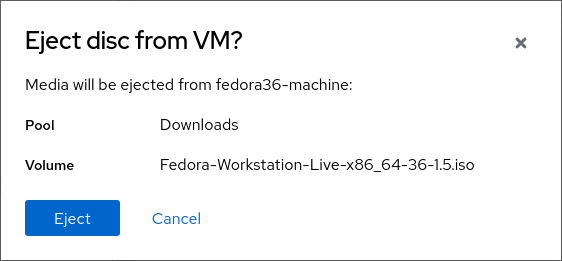Cockpit 279
Cockpit is the modern Linux admin interface. We release regularly.
Here are the release notes from Cockpit 279 and cockpit-machines 277:
Dark mode support
Cockpit now switches to a dark theme when system dark mode is enabled.
While many people just think it looks cool, dark mode is also an accessibility setting which helps people with various eyesight conditions and migraines. Dark mode can be easier to use in a dark environment as well.

Most modern desktops and operating systems have system-level controls to switch between light and dark modes.
- GNOME 42 added dark mode support in the “Settings” app, under “Appearance”. GNOME 43 went a step further and added a toggle in the menu at the top-right of the screen. GNOME is the default desktop of distributions such as Fedora Linux, Red Hat Enterprise Linux, CentOS Stream, Ubuntu, Intel Clear Linux*, and several others.
- KDE ships with a light and dark theme and has a switch in settings. There is a bug between KDE and Chromium, however, but it does have a workaround. Firefox is fine by default.
- Windows 10 and Windows 11 both have light and dark mode settings in the Windows Settings app under “Personalization” > “Colors”.
- macOS has auto, dark, and light modes in the settings app.
- iPhones and iPads support light and dark modes in settings and control center, and can auto-adjust based on a schedule.
- Android 9 (2018) and up have dark mode support, and recent versions can adjust on a schedule. Some other popular devices such as Samsung and OnePlus have had dark mode support for some time as well.
- Browsers such as Firefox, Chrome, and Safari have the option to manually set dark or light mode or use the system setting. On Linux, if the standard desktop setting is not supported by a desktop, most browsers will usually guess based on the system theme (dark text on light background or vice versa).
- Cockpit Client, the native Linux desktop app, has dark and light mode support. It supports the system setting and passes this information to Cockpit.
Allow TRIM/UNMAP requests by default for newly added disks
“Trim” is a method to reduce space used by data on a disk.
When creating a new VM or adding a new disk to a VM, Cockpit Machines configures libvirt to respect an operating system’s trim commands.
Please note that this change only allows trim requests to be sent. It doesn’t set up any periodic trim mechanism. Most Linux distributions are already set up to send trim commands for SSDs and disk images by default. Other recent versions of operating systems, such as Windows, also sends trim commands. Some older operating systems and distributions do not send trim and would require manual configuration to use this space-saving option.
Insert and eject CD & DVD media
CD and DVD media can be inserted and ejected while a VM is running.


Try it out
Cockpit 279 and cockpit-machines 277 are available now:
